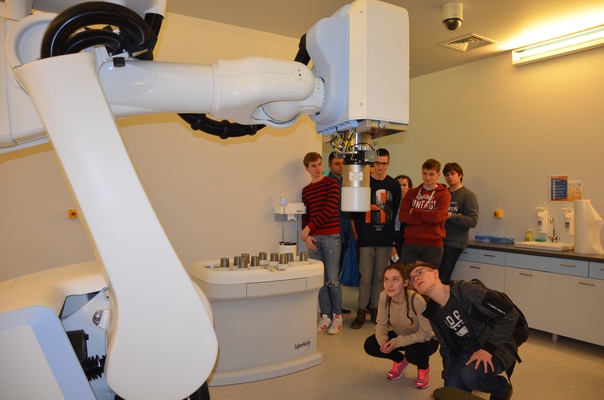VISIT TO THE MAZOVIAN ONCOLOGICAL HOSPITAL - MEDICAL APPLICATIONS OF NUCLEAR PHYSICS
On March 19, 2019, participants of the Erasmus + project 'Science around us' from our school had the opportunity to visit the Cybernetic Surgery Institute of the Mazovian Oncological Hospital in Wieliszew. Our guide was a hospital employee, a physicist Krzysztof Chełmiński, a true enthusiast of his profession and a former student of the coordinator of the project, one of those students you never forget - inquisitive, critical, open-minded.
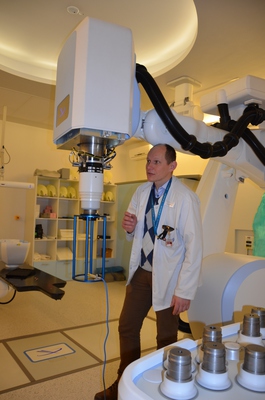
We had the opportunity to see a computed tomograph and learn about its construction and principle of operation. This apparatus, in addition to its diagnostic function, also has a therapeutic role, because it allows precise irradiation of patients using a megavolt X-ray beam.
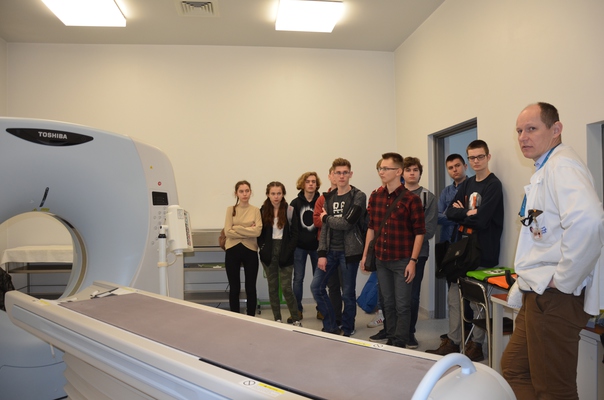
We learned how to set up a treatment regimen for a specific patient and what are the tasks of a physicist in planning the radiation dose and its distribution in the patient's body.
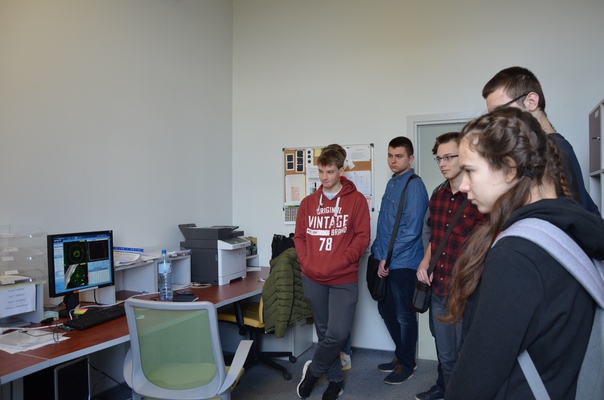
We saw phantoms that are models of human organs when it comes to interacting with ionizing radiation, and learned how to use them to plan cancer irradiation.
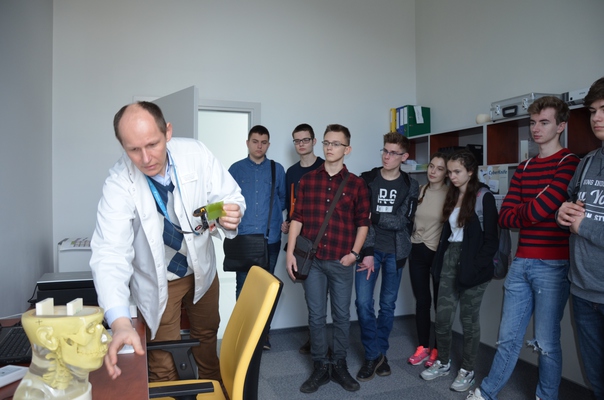
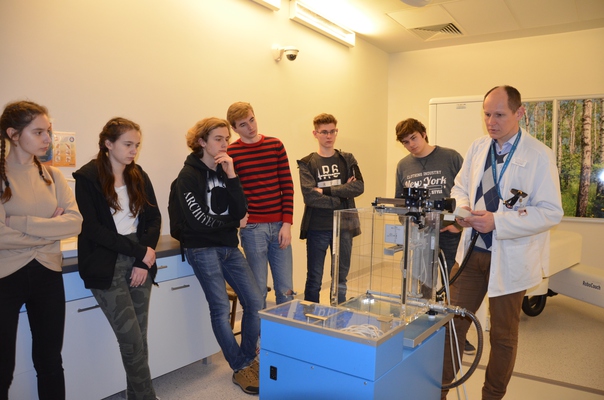
We became acquainted with dose meters and their applications in medicine.
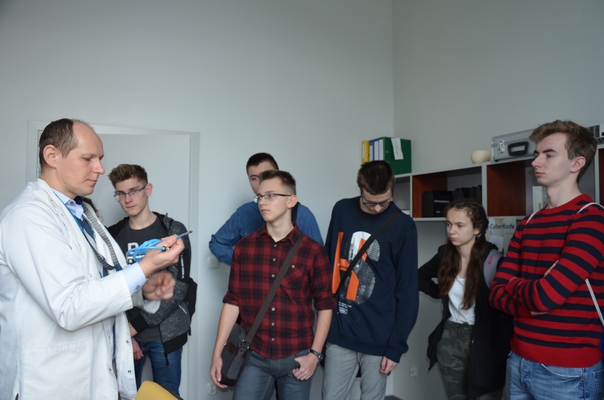
We saw the operation of a robot controlling the setting of a linear accelerator used to irradiate malicious tumors. We learned that this device, called CyberKnife (cybernetic knife), uses a robot originally designed for assembling cars. In Poland, there are only three devices of this type, so the students had the opportunity to see one of the most modern devices used for precise radiotherapy working in our country. The precision of the robot is really impressive - it can set the accelerator with the accuracy of 0.1mm. Its arm can move in different directions, which allows you to position the photon accelerator placed on it exactly in such a way that it irradiates only the tumor.
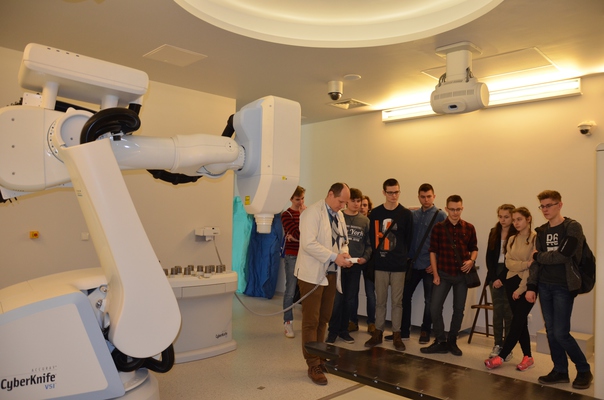
Special collimators shape the size of the emitted beam, allowing irradiation of small tumors measuring only several millimeters. Such a limited beam of radiation allows for high doses to be administered during one session of irradiation, significantly increasing the effectiveness of treatment and reducing side effects for healthy tissues.
